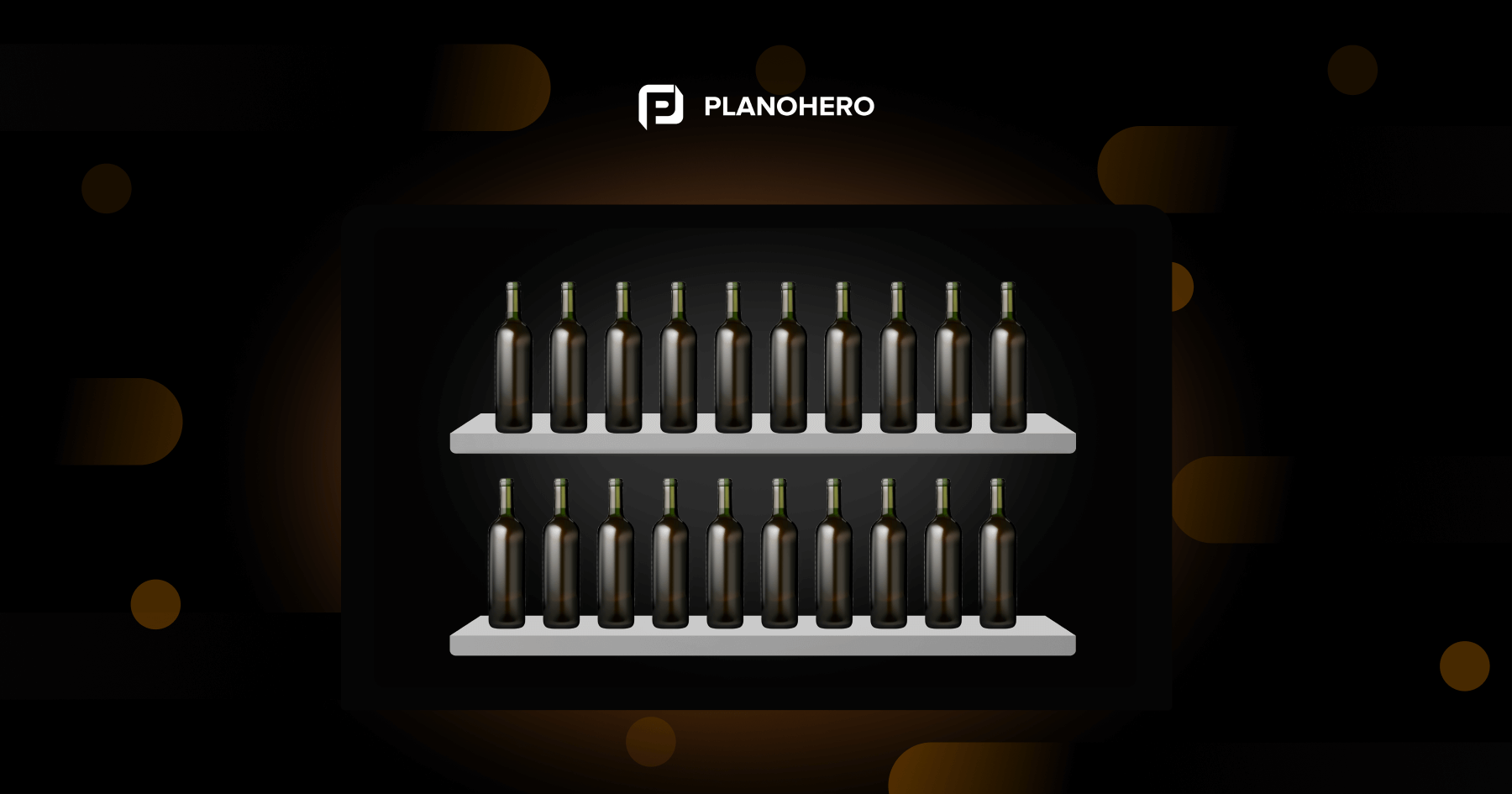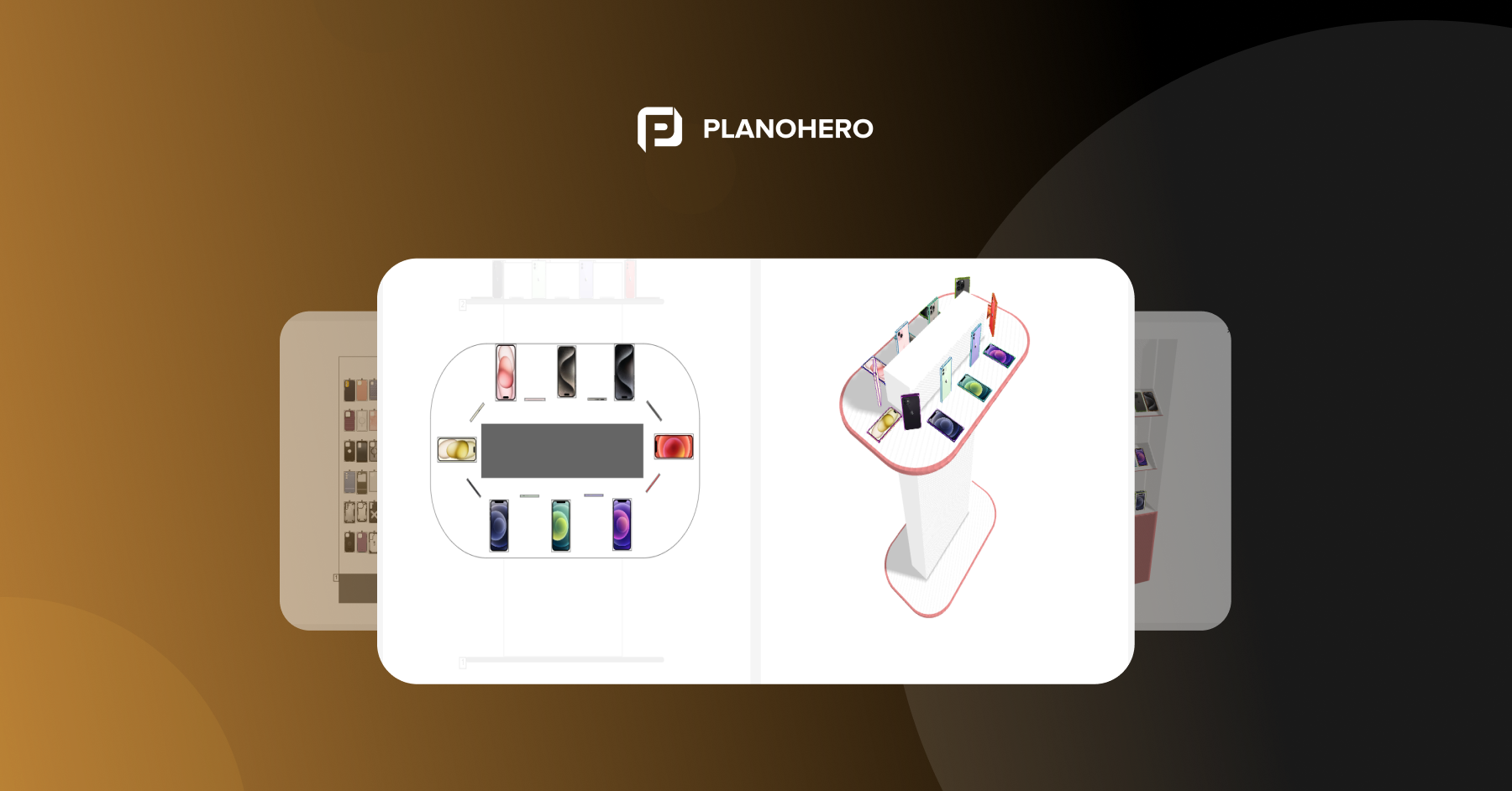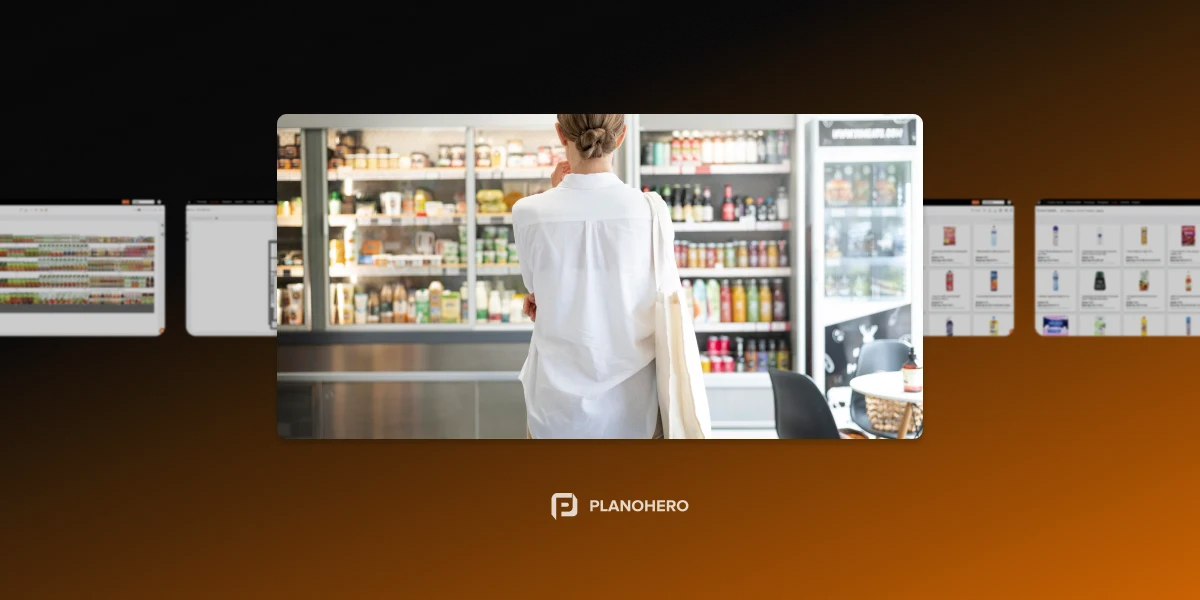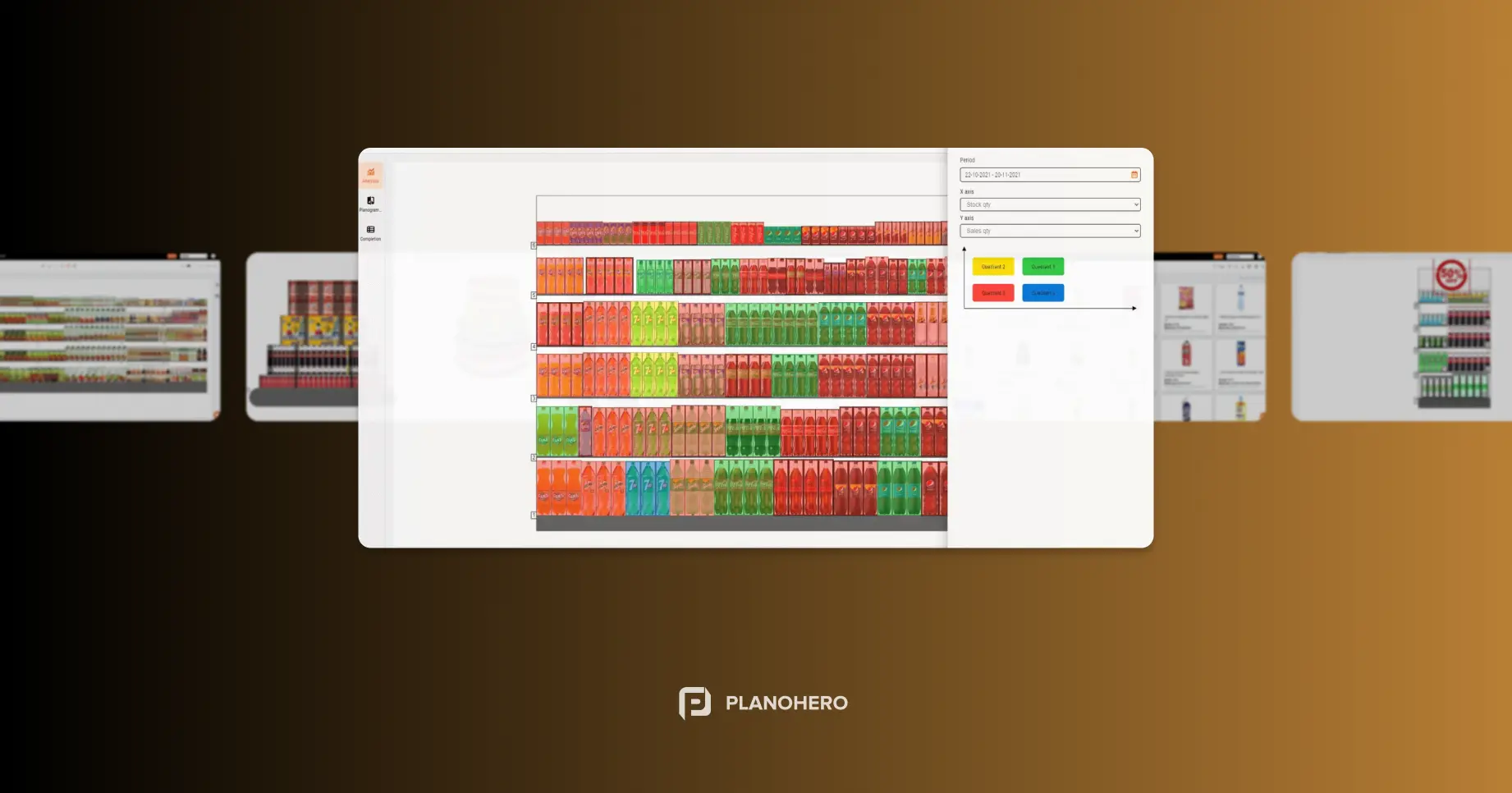Liquor store merchandising is more than just filling shelves; it's about creating an experience. When you plan your merchandising and display correctly, you tell a story, encouraging customers to explore new experiences and products on your shelves. This article will look at the intricacies of merchandising for alcoholic beverage stores. Together, we will figure out how to set up merchandising and give some tips and tricks on store layout and display of alcoholic beverages.
The specifics of merchandising and space planning in liquor stores
A strategic store layout creates an attractive shopping environment, makes it easier for customers to find the right products, and encourages impulse purchases.
Depending on the size of the store and the atmosphere you want to create, you can choose the layout format. Some retailers create an extravagant atmosphere, like in boutiques, while others plan a store similar to a wholesale warehouse.
Choose your format based on your target customers' store area, assortment, and preferences. Regardless of the format, you will need to organize the placement of equipment and products in the sales area by category, brand, or local features.
However, successful liquor store management requires more than a strong merchandising strategy. It is a comprehensive approach that involves the setup of a planning process, efficient inventory management, competitive pricing strategies, high-quality customer service, and marketing of excisable goods.
Below are the main tips for successful merchandising of liquor stores.
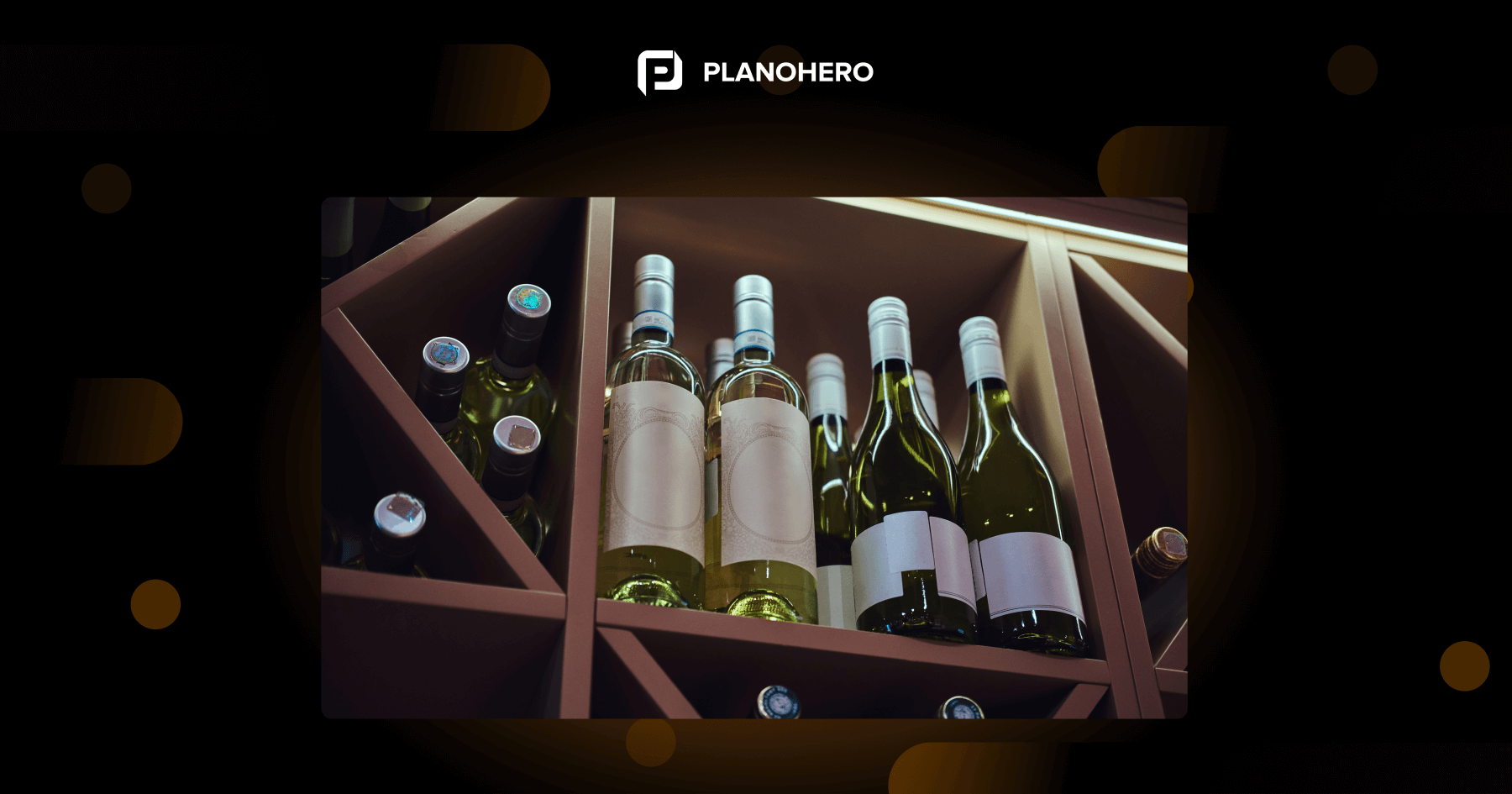
Cross merchandising in liquor stores
This strategy stimulates impulse purchases by displaying complementary products together. For example, you can place shakers and salt for margaritas next to tequila and appetizer sets next to beer. Pack wine and beer sets with accompanying cheeses, meats, and snacks. Place spice sets for Bloody Marys to create a cocktail display. Display bourbons with recommended cocktail additions. The right cross-merchandising displays can drive additional sales while helping customers experience your store better.
Shelf balance
The goal is to allocate shelf space based on the best-selling and most profitable products, not those that occupy the most space. Prioritization and placement of products on the shelves should be based on profit margins, sales velocity, seasonality, and inventory levels. The most profitable products should be placed at eye level, and those that sell more slowly should be placed on higher or lower shelves.
Seasonal changes to the beverage layout
Adapting your layout to seasonal trends helps you capitalize on the seasonal momentum and increase sales. In summer, light beers and tequila are popular, while in winter, dark beers and hot cocktails are popular. Constantly updating the display according to the season helps to maximize sales throughout the year.
Informative layout
A product becomes more desirable when customers know more about it. This can be information about the brand's origin or product, how to properly consume it, or how long it has been aged. This information must be concise so customers do not feel they are being lectured.
Restrictions on the display of alcohol
The layout of alcoholic beverages has restrictions due to legislation and ethical standards. First, alcoholic beverages must be placed in separate areas inaccessible to minors, which ensures compliance with the age limit. Second, alcohol advertising in stores is restricted: brightly colored banners that may attract excessive attention or promote impulse purchases are not allowed. There are also restrictions on promotions and tastings, which must comply with local laws. It is also important to comply with regulations regarding the time of sale of alcohol, which may be regulated, especially in the evening and at night. These restrictions are aimed at protecting public health and ensuring responsible alcohol trade.
How to optimize liquor planograms to increase sales
Retailers who don't update their beer and wine planograms may miss out on a chance to increase sales. Retailers who want to optimize the layout and manage planograms can do so with the help of planogram creation software.
PlanoHero software has the functionality to design your store from scratch - building a store plan and equipment, creating planograms, monitoring their implementation, analyzing current sales, and optimizing shelf space in the future.
Take a look at the planograms created in PlanoHero.
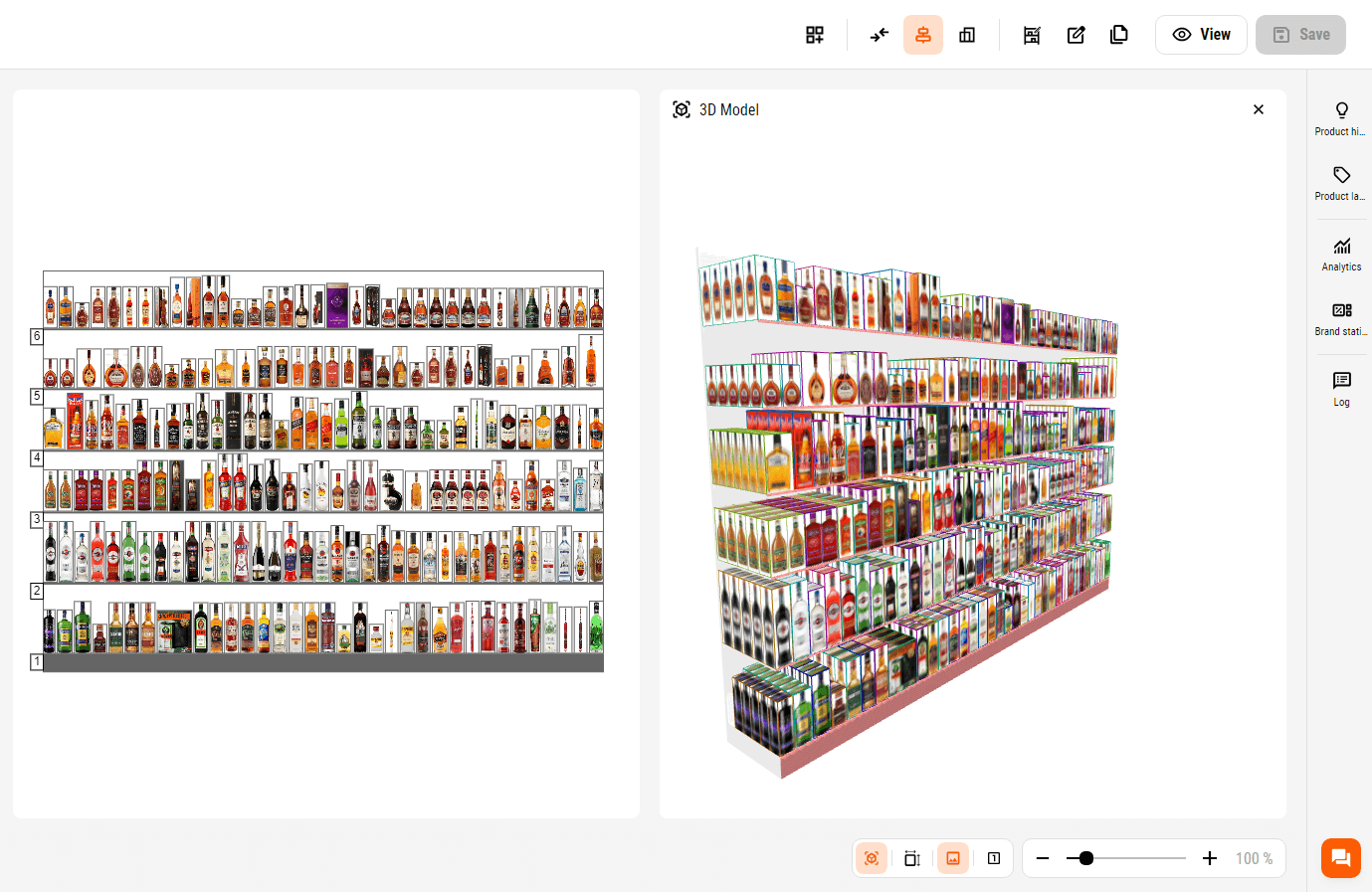

Beer Planograms, Wine Planograms
Planograms for beer, wine, and spirits should be structured. Place beer in the lower or middle rows, dividing it by type (light, dark, non-alcoholic) and brand. Place wines on the middle and upper shelves, segmenting them by country of origin and grape variety. Spirits are best placed on the top shelves, segmented by type and brand.
Effective layout of liquor products in stores
If it is a regular grocery store, alcoholic beverages should be placed in specially designated areas, away from children's products and essentials. The best place is in the middle or end of the customer's route, where they have already made their main purchases and are ready to spend more.
Use different types of equipment. For an effective presentation of beer and wine, you need to combine refrigerated displays, shelving, and separate stands/cases.
Divide alcoholic beverages into categories: wine, beer, and spirits. You can further segment products by country of origin, brand, price, and other criteria in each category. This will make it easier for customers to find the right product. Knowing the demographics of your customers, you can better organize the display of alcohol by brand or type of drink.
Try planogram software that can handle any level of planogram complexity. Meeting the needs of alcoholic beverage merchandising, PlanoHero automates the entire planogramming process.
Proper organization of planograms and displays in liquor stores increases sales and improves customer experience, making shopping more convenient and enjoyable.
Liquor Store Merchandising FAQ
What is the role of ABC analysis in optimizing a liquor store's assortment?
ABC analysis helps categorize products by importance (A = high-value or high-turnover items), allowing managers to prioritize shelf space, adjust assortments, and replace underperforming SKUs. This data-driven approach improves profitability and customer satisfaction.
How can retailers boost sales with private label and exclusive import products?
Offering house brands or exclusive imports helps stores stand out from competitors, gives customers high-quality options at lower prices, and builds brand loyalty. Positioning these items between well-known and budget brands boosts visibility and perceived value.
How can cross-merchandising include non-alcoholic and lifestyle items?
In addition to typical pairings like beer and snacks, stores can cross-merchandise water, glasses, cocktail accessories, and even small games or travel-sized items. These subtle additions meet implicit customer needs, increase average basket size, and enhance the shopping experience.
Looking for a service to create planograms?
Try a free demo version of PlanoHero
